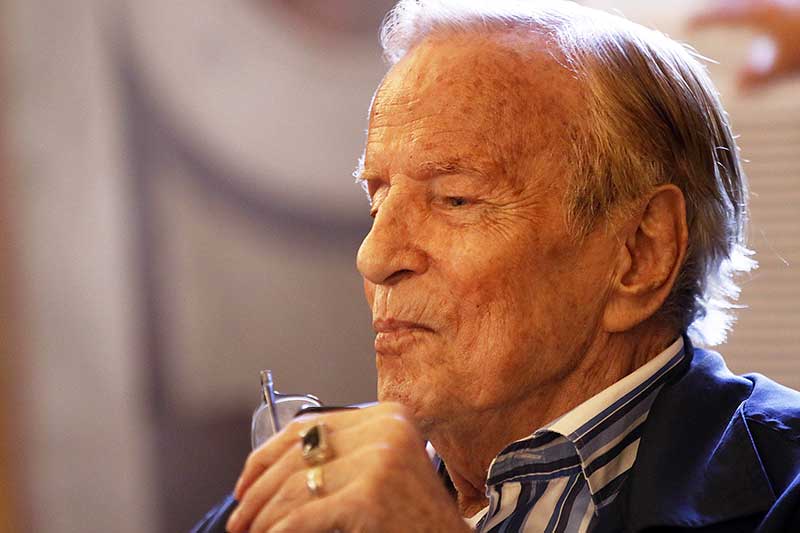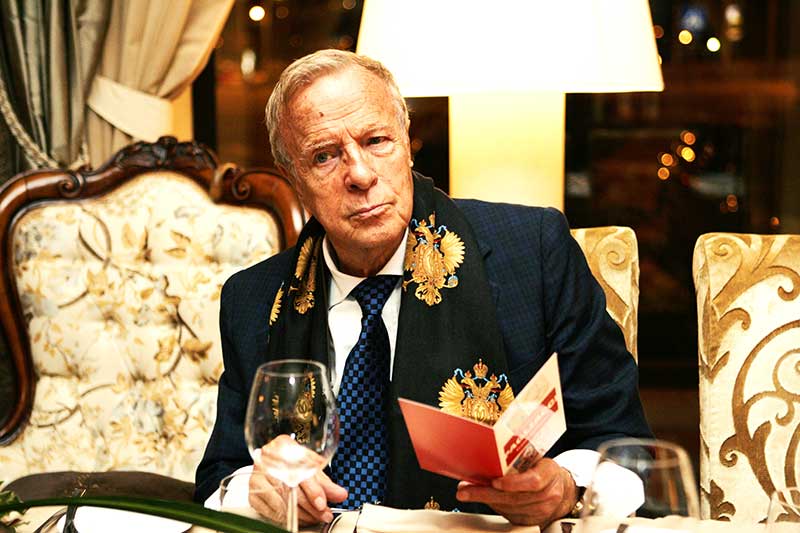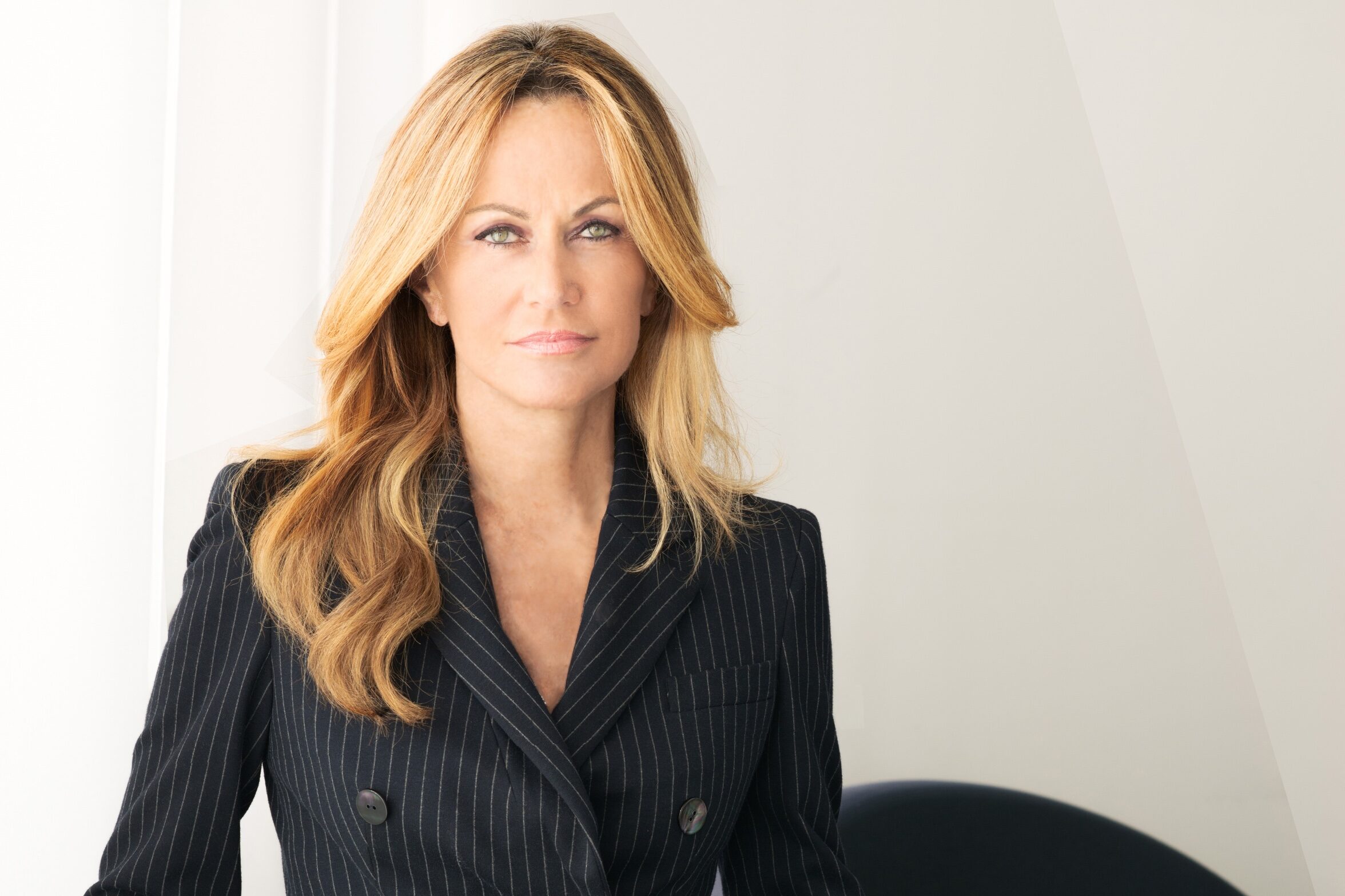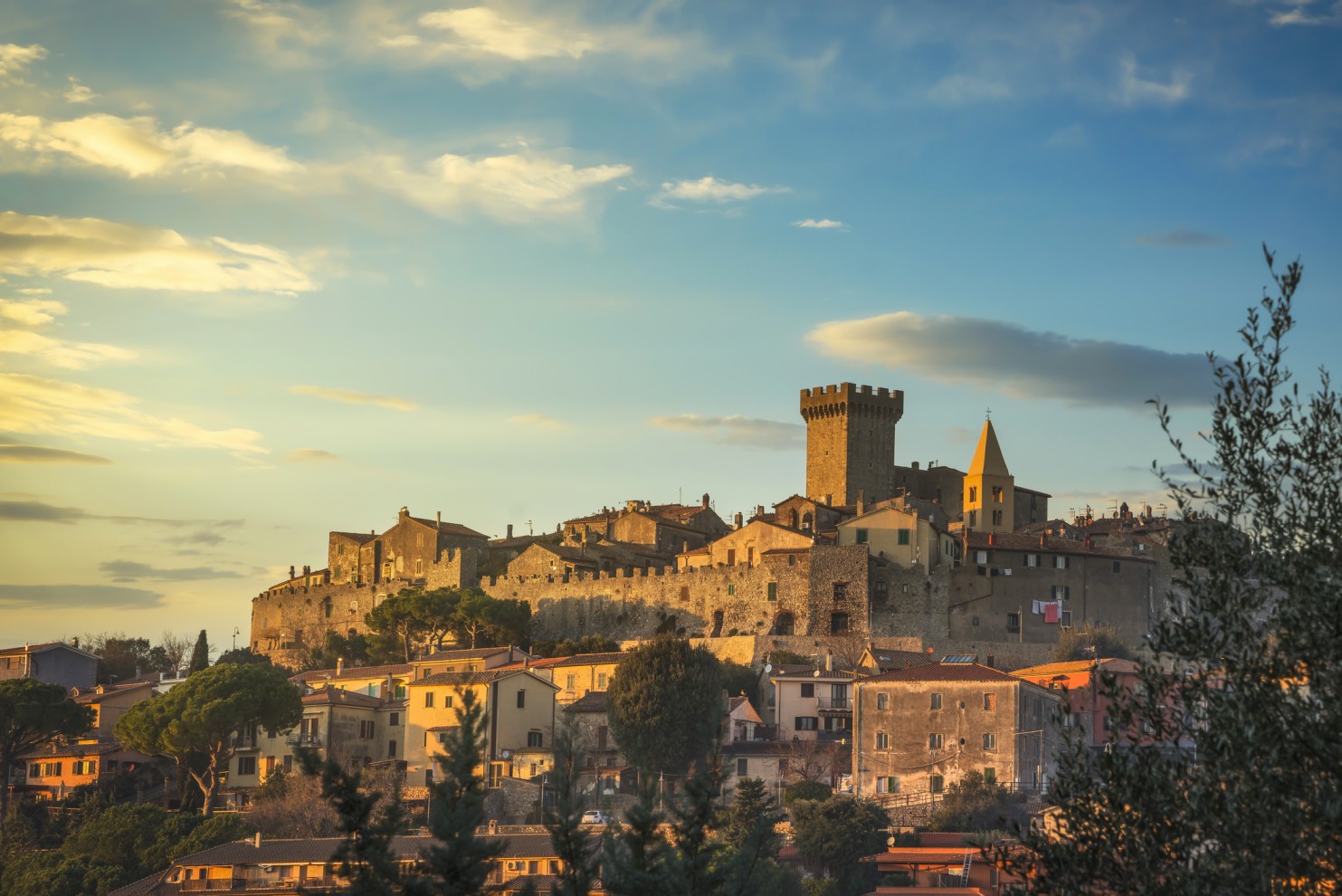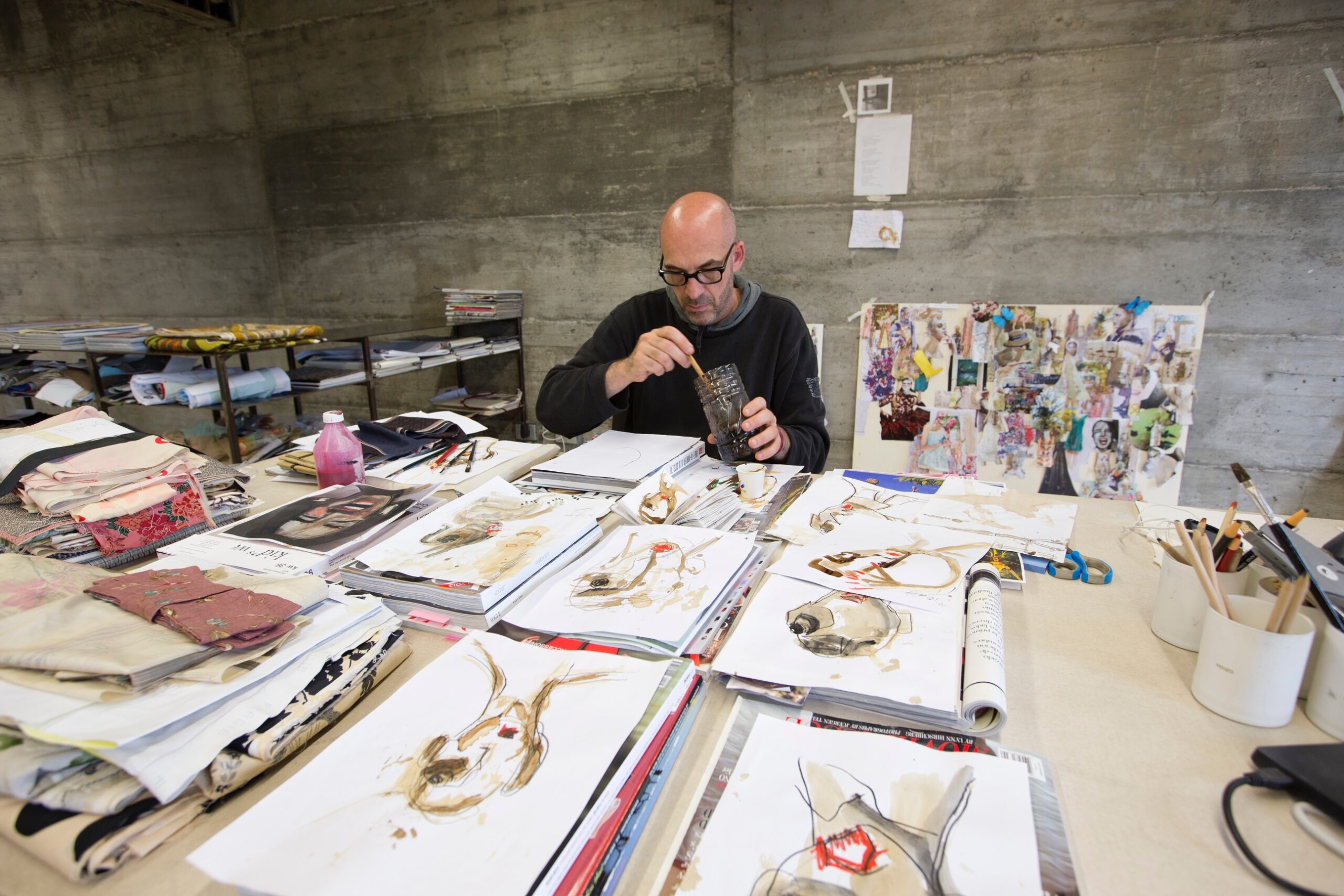I will never forget how Franco Zeffirelli made me feel welcome that spring-like day on March 20, 2013 when he invited me to lunch at his Roman villa on the gently undulating Via Appia Antica, its wide green verges shaded by lofty umbrella pines.
Dolly and Bianchina, his two energetic Jack Russell terriers, were roaming around the living room. An 18th century Pietà dominated the corner of the room where the maestro was sitting in a wheelchair surrounded by flowers, antiques and costume sketches.
His signature smile was there, wide, open and warm. I imagine him with same magnetic smile on his final day before he died on June 15 at age 96.
I arrived at the gate and rang the bell. His two adoptive sons Pippo and Lucio opened the door. They were the maestro’s caring guardian angels who helped him be comfortable and safe in the last stages of his life. What kept them going was their devotion to him.

Franco Zeffirelli © Gianni Pasquini | Dreamstime.com
Obsessed with beauty, prolific opera and film director Franco Zeffirelli started talking about the idea for a double final project he cherished: the film he had yet to direct, called The Florentines, and a film adaptation of Dante’s Inferno that was never realized.
“I am afraid I will not be able to carry them out this time,” he said. “I am ready to face death. Time is coming. I have escaped death so many times, and death is expected when you are this old. Maybe one day, who knows, somebody else will do The Florentines, which is set in the Italian Renaissance,” he said, as his eyes light up. The film he was dreaming about is based on the rivalry between Michelangelo and Leonardo.
The master of grandeur in theater, cinema and opera began to look back on a long and illustrious career and the interview moved around the table until sunset. We passed the hours tasting delicacies and conversing: his stories were alive. At a certain point, he started to hum a melody from Puccini’s Turandot. Zeffirelli’s production of Turandot is legendary.
His fondness for opera came from his grandfather and uncle. “A gramophone was always on. Back then in Italy, music was a luxury intended for everyone including the poor,” he said.

A great icon of Italian art left us: Franco Zeffirelli passed away last week © Kojoku | Dreamstime.com
“Opera is about ideas, feelings, themes — not only plots, characters and artists singing beautifully,” he added. “Opera was engendered in Florence around the 1500s by intellectuals inspired by Greek melodrama.”
“I shot all the films I wanted to and went back to opera whenever I felt vulnerable and in need of reassurance. Opera for me has always been a sort of a mother figure, the mother I lost when I was six. It’s like being at ease in the arms of a mother when she breastfeeds her baby who demands to be fed more, nuzzling his head against her nipples.”
From his movie career, he remembered his great friendship with Tennessee Williams. About Mel Gibson whom he directed in Hamlet, he said less positive things, characterizing him as “a cruel guy, a disagreeable person.” The actresses he worked with were all wonderful, especially Olivia Hussey, his Juliet in Romeo and Juliet, and his Virgin Mary in his 1977 masterpiece movie Jesus of Nazareth.
As Dolly and Bianchina continued to roam, Zeffirelli turned the conversation to the subject of the Zeffirelli Foundation, which is now a reality in Florence. “It will be concerned almost entirely with the preservation of my work,” he said.
“The first gift I had from God was being born in Florence,” he said. The city gave the world Michelangelo and Leonardo. Unfortunately, I do not belong to that small élite group of geniuses, but I can modestly say that I am among those Florentines who have distinguished themselves within their own professions in the world. My temperament is so typically Florentine — we are quarrelsome people, fractious, hot-blooded individuals.”
Zeffirelli studied at the Academy of Fine Arts in Florence, starting his career as a set designer. Film director Luchino Visconti took him under his wing as a promising young designer in 1948.
His father’s family, the Corsis, came from Vinci. The maestro liked to claim kinship with Leonardo, who also came from that small town outside Florence. Corsi was a notable Renaissance last name.
His father Ottorino Corsi worked in textiles. “He was an inveterate lothario who spent World War I impregnating Florentine wives,” he told me. “He seduced my mother, Adelaide Garosi, after the war.” She was a fashion designer and Corsi met her professionally in her atelier.
Being a married woman with three children already, Adelaide was obliged to invent a name for her illegitimate child. “She chose Zeffiretti after a short duet from Mozart’s The Marriage of Figaro (‘Sull’aria, che soave Zeffiretto), but the last name was misspelled in the registry,” he said. “My name is very unique and it sounds fresh and springy.”
The film Tea With Mussolini is a semi-autobiographical tale of Zeffirelli’s childhood and the female figures that surrounded him, including his English teacher, Mary O’ Neill, played by Cher in the film. “I felt so lonely after my mother’s death, then loneliness grew even bigger, knowing that my father was an unprincipled scoundrel,” he said. “Whom could I trust? The ladies were the only source of warmth in my life.
“I owe everything to my mother: In the ’20s, she had the courage to defend her pregnancy with all her strength. She carried the love child inside her, against the will of all her relatives, who pressured her into having an abortion.”
He insisted I be his guest for dinner as well. As I departed, I had already nostalgia for a real lover of life who makes the whole world his family.
Non dimenticherò mai come Franco Zeffirelli mi abbia fatto sentire la benvenuta quel giorno di primavera del 20 marzo 2013 quando mi invitò a pranzo nella sua villa romana sulla dolcemente ondulata via Appia Antica, i suoi ampi confini verdi ombreggiati da alti pini marittimi.
Dolly e Bianchina, i suoi due energici Jack Russell terrier, giravano per il soggiorno. Una Pietà settecentesca dominava l’angolo della stanza dove il maestro era seduto sulla sedia a rotelle circondato da fiori, oggetti d’antiquariato e bozzetti di costumi.
Il suo sorriso caratteristico era lì, ampio, aperto e caldo. Lo immagino con lo stesso sorriso magnetico l’ultimo giorno prima di morire, il 15 giugno, a 96 anni.
Arrivai al cancello e suonai il campanello. I suoi due figli adottivi Pippo e Lucio aprirono la porta. Erano gli angeli custodi del maestro e lo hanno protetto e aiutato a stare bene nelle ultime fasi della sua vita. Ciò che li sosteneva è stata la devozione per lui.
Ossessionato dalla bellezza, il prolifico regista di opera e cinema Franco Zeffirelli iniziò a parlare dell’idea di un ultimo doppio progetto a lui caro: il film che doveva ancora dirigere, intitolato I Fiorentini, e un adattamento cinematografico dell’Inferno di Dante mai realizzato.
“Temo di non essere in grado di realizzarli questa volta”, mi disse. “Sono pronto ad affrontare la morte. Il momento sta arrivando. Sono sfuggito alla morte così tante volte, e si presuppone che la morte sia vicina quando si è così vecchi. Forse un giorno, chissà, qualcun altro farà I Fiorentini, che è ambientato nel Rinascimento italiano”, disse con gli occhi che si illuminavano. Il film che sognava è basato sulla rivalità tra Michelangelo e Leonardo.
Il maestro della grandezza nel teatro, nel cinema e nell’opera iniziò a guardare indietro ad una lunga e illustre carriera e l’intervista si mosse intorno al tavolo fino al tramonto. Abbiamo passato ore assaggiando prelibatezze e conversando: le sue storie erano vive. A un certo punto, cominciò a canticchiare una melodia della Turandot di Puccini. La produzione della Turandot di Zeffirelli è leggendaria.
La sua passione per l’opera lirica veniva dal nonno e dallo zio. “Un grammofono era sempre acceso. All’epoca, in Italia, la musica era un lusso destinato a tutti, compresi i poveri”, disse.
“L’opera è fatta di idee, sentimenti, temi – non solo trame, personaggi e artisti che cantano magnificamente”, ha aggiunto. “L’opera fu generata a Firenze intorno al 1500 da intellettuali ispirati dal melodramma greco”.
“Ho girato tutti i film che volevo e sono tornato all’opera ogni volta che mi sentivo vulnerabile e bisognoso di rassicurazioni. L’opera per me è sempre stata una sorta di figura materna, la madre che ho perso a sei anni. E’ come star bene tra le braccia di una madre quando allatta il suo bambino che chiede di essere nutrito ancora, che annusa la sua testa contro i suoi capezzoli”.
Dalla sua carriera cinematografica, ha ricordato la sua grande amicizia con Tennessee Williams. Di Mel Gibson, che ha diretto nell’Amleto, ha detto cose meno positive, caratterizzandolo come “un ragazzo crudele, una persona sgradevole”. Le attrici con cui ha lavorato sono state tutte meravigliose, in particolare Olivia Hussey, la sua Giulietta in Romeo e Giulietta, e la sua Vergine Maria nel capolavoro del 1977 Gesù di Nazareth.
Mentre Dolly e Bianchina continuavano a vagare, Zeffirelli rivolse la conversazione al tema della Fondazione Zeffirelli, che ora è una realtà a Firenze. “Si occuperà quasi interamente della conservazione del mio lavoro”, disse.
“Il primo regalo che ho avuto da Dio è essere nato a Firenze”, disse. “La città ha dato al mondo Michelangelo e Leonardo. Purtroppo non appartengo a quella piccola élite di geni, ma posso modestamente dire di essere tra quei fiorentini che si sono distinti nella loro professione nel mondo. Il mio temperamento è così tipicamente fiorentino: siamo persone litigiose, frammentarie, individui dal sangue caldo”.
Zeffirelli ha studiato all’Accademia di Belle Arti di Firenze, iniziando la sua carriera come scenografo. Il regista Luchino Visconti lo prese sotto la sua ala come giovane e promettente designer nel 1948.
La famiglia del padre, i Corsi, viene da Vinci. Il maestro amava rivendicare la parentela con Leonardo, che proveniva anche lui da quella piccola città fuori Firenze. Corsi era un importante cognome rinascimentale.
Suo padre Ottorino Corsi lavorava nel settore tessile. “Era un incorreggibile dongiovanni che passò la prima guerra mondiale a mettere incinta le donne fiorentine”, mi disse. “Dopo la guerra sedusse mia madre, Adelaide Garosi”. Era una stilista e Corsi la conobbe professionalmente nel suo atelier.
Essendo una donna sposata con già tre figli, Adelaide fu costretta a inventare un nome per il suo figlio illegittimo. “Ha scelto Zeffiretti da un breve duetto in Le nozze di Figaro di Mozart (‘Sull’aria, che soave Zeffiretto), ma il cognome è stato scritto male nel registro”, ha detto. “Il mio nome è molto particolare e suona fresco ed elastico”.
Il film Tè con Mussolini è un racconto semi-autobiografico dell’infanzia di Zeffirelli e delle figure femminili che lo hanno coircondato, compresa la sua insegnante di inglese Mary O’ Neill, interpretata da Cher nel film. “Mi sono sentito così solo dopo la morte di mia madre, poi la solitudine è cresciuta ancora di più, sapendo che mio padre era una canaglia senza principi”, disse. “Di chi potevo fidarmi? Le donne erano l’unica fonte di calore nella mia vita”.
“Devo tutto a mia madre: negli anni ’20 ha avuto il coraggio di difendere la gravidanza con tutte le sue forze. Portò dentro di sé il figlio dell’amore, contro la volontà di tutti i suoi parenti, che la spingevano ad abortire”.
Insistette perché fossi sua ospite anche a cena. Alla mia partenza avevo già nostalgia di un vero amante della vita che ha fatto del mondo intero la sua famiglia.
